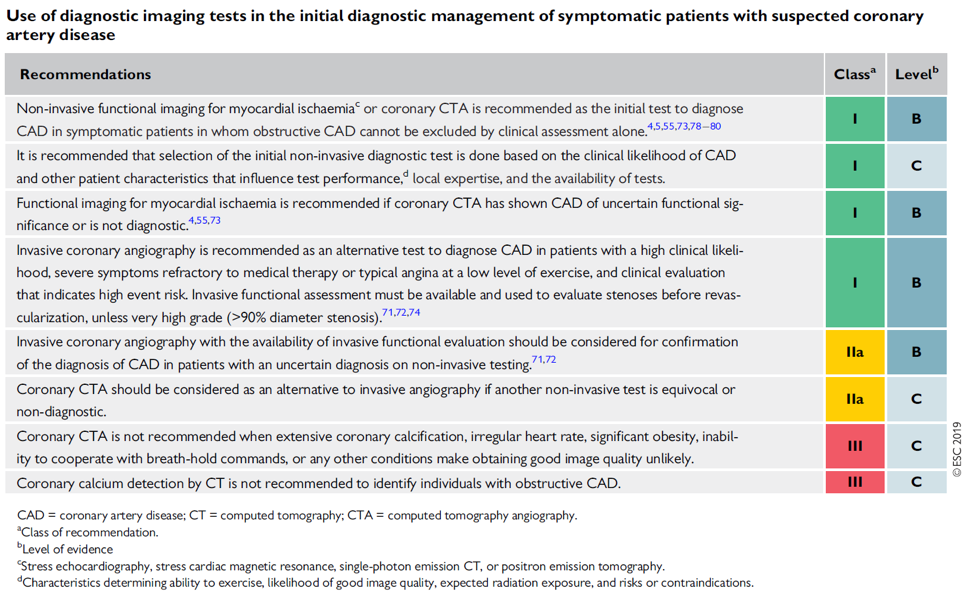
New CAD Guidelines Announced at ESC 2019
Last week, the European Society of Cardiology (ESC) released new guidelines on the management of chronic coronary syndrome (CCS) and I was encouraged to see some of the new recommendations. In particular, there were two key updates which caught my attention:
- Coronary computed tomography angiography (CTA) to Class I (B): With this move, CTA is now recognized as a first line test, on par with all other non-invasive functional tests.
- “Unless obstructive CAD can be excluded based on clinical evaluation alone, either non-invasive functional imaging or anatomical imaging using coronary CTA may be used as the initial test to rule out or establish the diagnosis of CCS.”

- This change was made in recognition of the fact that the pretest probability of disease in patients presenting with chest pain has fallen over the past several years and there is a growing population of symptomatic patients who are unlikely to have obstructive disease for whom CTA is an ideal test. Furthermore, a class IIa recommendation is made for CTA as an alternative to invasive angiography in patients with equivocal or non-diagnostic results from another non-invasive test. This recognition by the ESC guideline committee is encouraging and is yet more evidence of the growing confidence in the role of CTA as a primary diagnostic tool.
- Importance of physiology to guide revascularization: Another update that caught my attention was the emphasis on physiology-guided PCI. The five-year results from FAME-2 and a large meta-analysis by Zimmermann, et al. demonstrated a significant reduction in the risk of myocardial infarction (MI) in patients who underwent FFR-guided intervention, and the updated ESC guidelines are reflective of this evidence with a Class I recommendation for functional assessment of any stenosis ≤ 90% prior to revascularization.
With this update, ESC joins the Japanese Cardiovascular Society (JCS) and the United Kingdom’s National Institute for Health and Care Excellence (NICE) in recommending CTA as a frontline test for patients with suspected CAD. I am encouraged to see the evolving role of CTA in clinical guidelines around the world and to see societies recognize the importance of having both anatomical and functional information to guide both diagnosis and treatment for our patients with CAD.
— A perspective from HeartFlow Chief Medical Officer, Campbell Rogers, MD
Bio | LinkedIn





